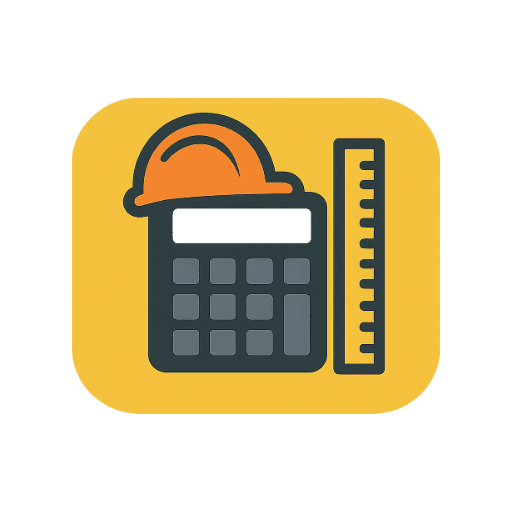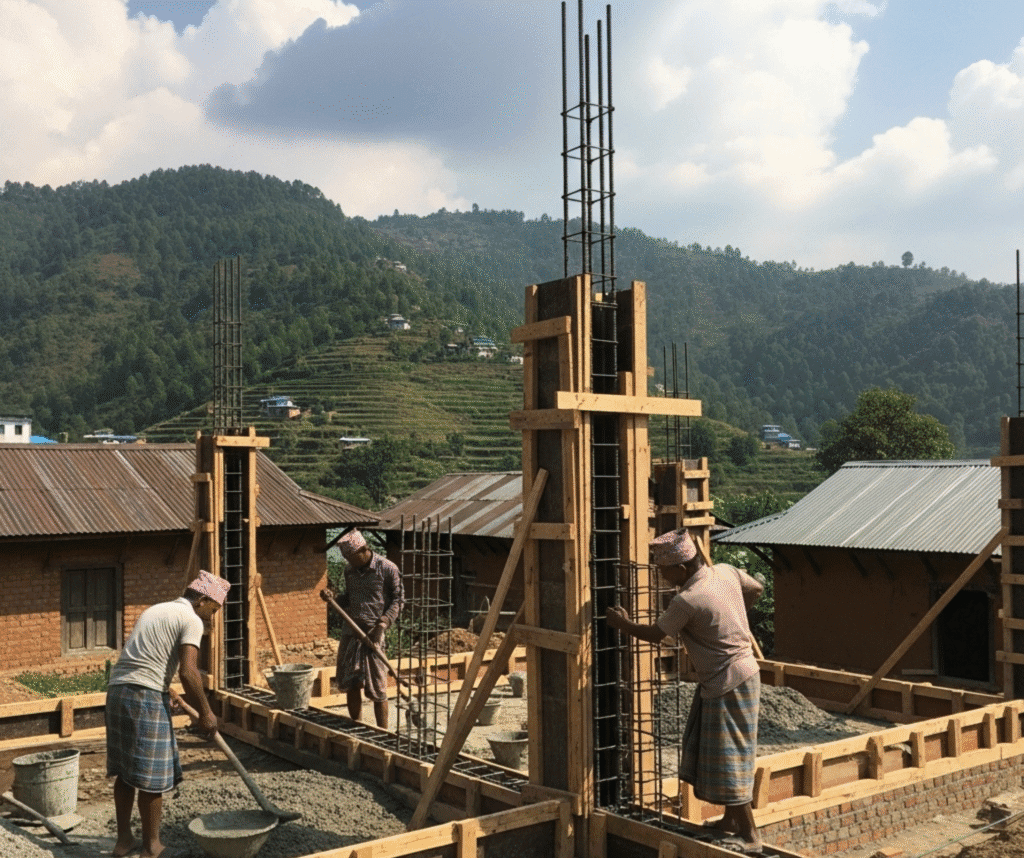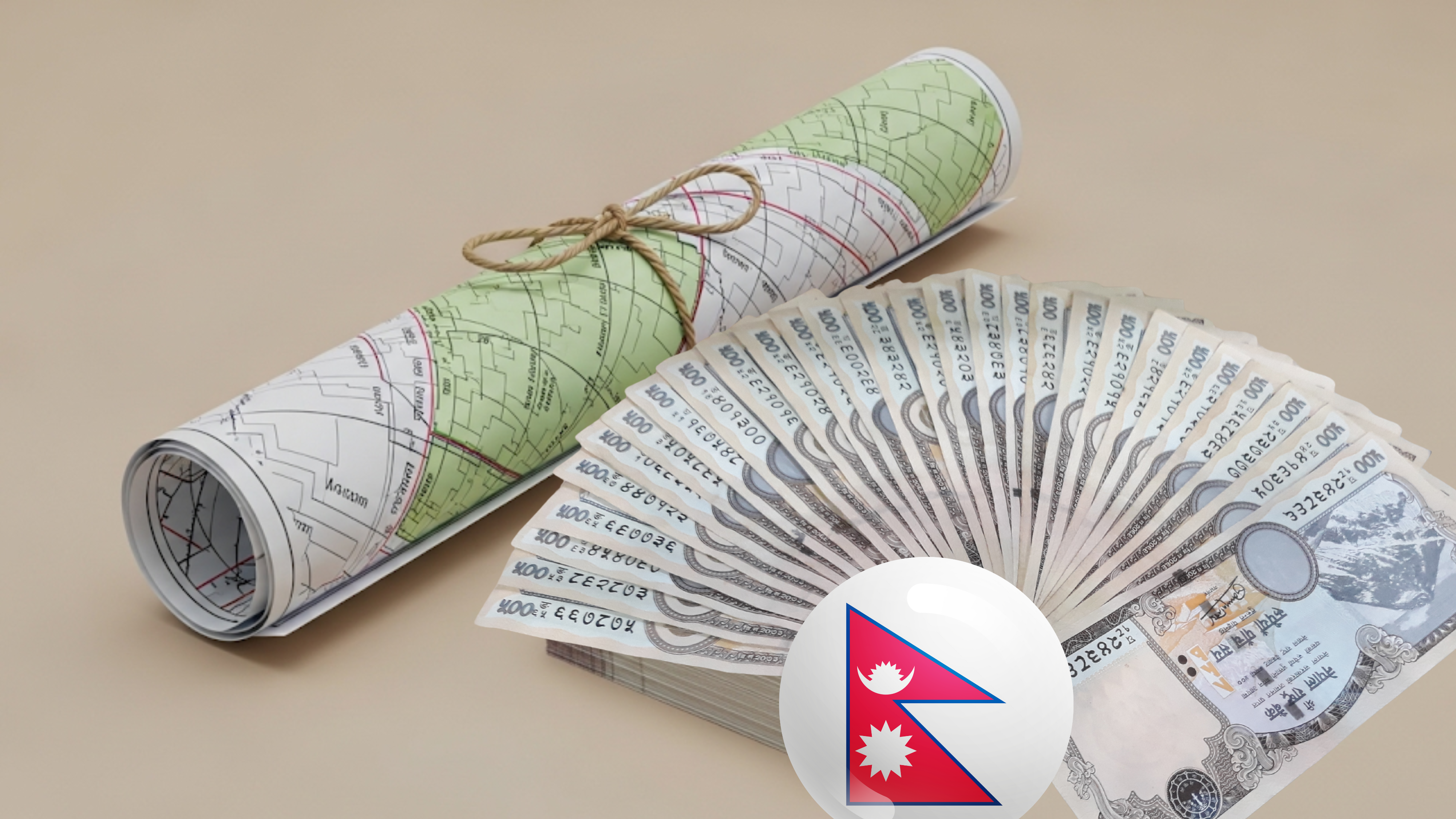Picture this: You’re halfway through building your dream home in Kathmandu when your contractor calls with devastating news. The cement has run out, the steel delivery is delayed, and your carefully planned timeline just crumbled like poorly mixed concrete. Sound familiar?
If you’ve ever been involved in house construction—whether as a homeowner, contractor, or designer—you know that material management can make or break your project. In Nepal’s dynamic construction landscape, where supply chains can be unpredictable and quality varies dramatically, having a robust construction material tracker isn’t just helpful—it’s absolutely essential.
This comprehensive guide will walk you through everything you need to know about construction material tracking, from basic principles to advanced digital solutions. You’ll discover how proper material management can save you thousands of rupees, prevent costly delays, and ensure your house design project stays on track from foundation to finish.
Whether you’re planning a simple renovation or a complete new build, this guide will transform how you approach material management in your construction projects.
What is Construction Material Tracking and Why It Matters for House Design
Understanding Material Tracking Basics
Construction material tracking is the systematic process of monitoring, managing, and controlling all building materials throughout your project lifecycle. Think of it as your project’s central nervous system—keeping track of what you need, when you need it, where it’s located, and how much you’ve used.
At its core, effective material tracking involves three fundamental components: inventory management, procurement coordination, and usage monitoring. For house design in Nepal, this becomes even more critical due to unique challenges like monsoon-related delivery delays, varying material quality standards, and fluctuating market prices.
Traditional tracking methods often rely on handwritten logs, basic spreadsheets, and memory—a recipe for disaster in today’s complex construction environment. Modern digital solutions provide real-time visibility, automated alerts, and seamless integration with your calculation for house construction processes.
The difference between successful and problematic projects often comes down to material management precision. When you know exactly what materials you have, what’s arriving, and what’s being consumed daily, you maintain control over your project timeline and budget.
The Cost of Poor Material Management in Nepal
Poor material management doesn’t just cause headaches—it devastates budgets and timelines. Recent studies show that construction projects without proper material tracking experience an average of 25-40% budget overruns and 30% longer completion times.
In Nepal’s construction market, these problems are amplified by several factors. Material prices can fluctuate significantly due to import dependencies, transportation challenges, and seasonal variations. Without proper tracking, you might find yourself paying premium prices for rush deliveries or accepting substandard materials to meet deadlines.
Consider the hidden costs: storage rental for excess materials, theft and waste from poor security, emergency procurement at inflated prices, and labor downtime waiting for materials. A comprehensive cost estimation for house construction must account for these material management factors from day one.
The most successful house design projects in Nepal consistently demonstrate one common trait: meticulous material planning and tracking from the preliminary design phase through project completion.
Essential Components of Construction Material Tracking for House Design
Core Tracking Elements

Effective construction material tracking encompasses four critical elements that work together to ensure project success. First, inventory management provides real-time visibility into current stock levels, helping you avoid both shortages and excess ordering. This is particularly crucial for house design in Nepal where storage space is often limited and weather protection is essential.
Second, procurement tracking monitors your entire supply chain from order placement through delivery confirmation. This includes vendor performance metrics, delivery schedules, and quality assessments. Third, usage monitoring tracks material consumption rates against planned quantities, helping identify waste, theft, or calculation errors early.
Finally, cost tracking ties everything together by monitoring actual spending against budgeted amounts, providing crucial data for future calculation for house construction projects. These four elements create a comprehensive system that transforms chaotic material management into a streamlined, predictable process.
Modern tracking systems also integrate with design tools, allowing you to connect your house colour design choices directly to material procurement lists, ensuring aesthetic and functional requirements align perfectly with available inventory.
Digital vs. Manual Tracking Systems
The choice between digital and manual tracking systems depends on project complexity, budget constraints, and team technical capabilities. Manual systems using spreadsheets and paper logs work for smaller projects but quickly become overwhelming as complexity increases.
Digital systems offer significant advantages: automated calculations, real-time updates, mobile accessibility, and integration capabilities. For pillar construction for house projects involving multiple material types and suppliers, digital systems prevent the calculation errors that commonly plague manual approaches.
However, digital systems require initial setup time, team training, and ongoing maintenance. The key is matching system complexity to project needs—a simple renovation might work fine with enhanced spreadsheet tracking, while a custom house design project benefits from comprehensive digital solutions.
In Nepal’s context, consider internet connectivity, team technical skills, and vendor digital capabilities when choosing your approach. Hybrid systems often work best, combining digital planning with manual on-site verification.
Step-by-Step Guide: Setting Up Your Construction Material Tracker
Phase 1 – Project Planning and Material Calculation
Setting up effective material tracking begins before you break ground. Start with comprehensive material calculations based on your house design specifications. This involves creating detailed quantity takeoffs for every construction phase, from foundation work through final finishes.
For accurate calculation for house construction, break down your project into logical phases: site preparation, foundation, structural framework, walls and roofing, MEP (mechanical, electrical, plumbing) rough-in, interior finishes, and exterior completion. Each phase requires specific materials with different delivery timing requirements.
Use your unit conversion calculator to ensure all quantities are in consistent units. This prevents ordering errors when suppliers use different measurement systems. Create buffer quantities for critical materials—typically 5-10% for standard items and 15-20% for custom or specialty materials.
Document everything in a master materials list that includes item descriptions, specifications, quantities, preferred suppliers, estimated costs, and required delivery dates. This becomes your project’s material bible, guiding all subsequent procurement and tracking activities.
Phase 2 – Supplier Coordination and Procurement
Once your material calculations are complete, focus on supplier relationship management. In Nepal’s construction market, reliable suppliers are invaluable partners who can make or break your project timeline.
Create supplier profiles that include contact information, payment terms, delivery capabilities, quality history, and pricing structures. For house design in Nepal projects, consider geographical factors—local suppliers might offer better prices and faster delivery, while specialized materials might require Kathmandu-based vendors.
Establish clear communication protocols with each supplier. Provide detailed specifications, delivery schedules, and quality requirements upfront. Create purchase orders that reference your material tracking system, making it easy to monitor order status and delivery compliance.
Implement a supplier performance tracking system that monitors delivery timeliness, material quality, and pricing consistency. This data becomes invaluable for future projects and helps you build a reliable supplier network.
Phase 3 – On-Site Material Management
On-site material management transforms your careful planning into reality. Establish receiving protocols that verify deliveries against purchase orders, inspect material quality, and update your tracking system immediately. This prevents the all-too-common scenario where materials arrive but “disappear” into project chaos.
Create designated storage areas for different material types, paying special attention to weather protection and security. For pillar construction for house projects, proper steel storage prevents rust and concrete additives require moisture protection—critical factors in Nepal’s varied climate conditions.
Implement daily material consumption tracking that compares actual usage against planned quantities. This early warning system helps identify problems before they become crises. Train your team on proper tracking procedures and make system updates a daily routine, not an afterthought.
Establish clear protocols for material transfers between work areas, ensuring your tracking system reflects real-time material locations throughout your construction site.
Best Construction Material Tracking Tools and Software Solutions
Top Digital Platforms for Material Management
The construction technology landscape offers numerous solutions for material tracking, each with unique strengths and capabilities. Raken’s material tracking features provide comprehensive inventory management combined with project reporting tools, making it excellent for medium to large-scale house design projects.
Matrak’s tracking software specializes in real-time location tracking and automated reporting, particularly valuable for complex projects with multiple material types and suppliers. Their mobile-first approach works well for Nepal’s construction teams who need field accessibility.
Intelliwave’s track and trace solutions offer advanced analytics and supply chain visibility, helping you identify patterns and optimize future material procurement strategies. These platforms transform raw tracking data into actionable insights for better project management.
Construction Material Tracker (COMING SOON)

Each platform offers free trials or demo versions, allowing you to test functionality before committing to a particular solution. Consider your team’s technical comfort level, project complexity, and long-term growth plans when evaluating options.
Choosing the Right Solution for Your House Design Project
Selecting the optimal material tracking solution requires careful analysis of your specific project requirements and constraints. For smaller house design projects under 2,000 square feet, enhanced spreadsheet solutions might provide sufficient functionality without the complexity of dedicated software.
Medium-sized projects benefit from cloud-based tracking platforms that offer mobile accessibility, automated calculations, and basic reporting features. These solutions typically cost $50-200 monthly but can save thousands in prevented overruns and delays.
Large custom home projects or multi-unit developments require enterprise-level solutions with advanced features like supplier integration, automated purchasing, and comprehensive analytics. While more expensive, these systems provide ROI through improved efficiency and reduced waste.
Consider your team’s technical capabilities, internet connectivity reliability, and vendor integration requirements when making your decision. The best system is one your team will actually use consistently throughout the project.
Material Tracking for Specific House Design Elements
Foundation and Structural Materials


Foundation and structural elements require the most precise material tracking due to safety implications and correction costs. Pillar construction for house projects demands careful monitoring of concrete grades, steel reinforcement specifications, and curing materials to ensure structural integrity.
Create detailed tracking protocols for concrete deliveries, including mix design verification, slump testing documentation, and cure time monitoring. Steel reinforcement tracking should include grade certificates, bend test results, and placement verification to prevent structural compromises.
Foundation materials often have strict timing requirements—concrete must be placed within specific timeframes, and steel positioning must be verified before pouring. Your tracking system should include time-sensitive alerts and quality checkpoints to prevent costly mistakes.
Consider seasonal factors in Nepal’s climate when scheduling foundation materials. Monsoon periods require additional weather protection materials and modified curing procedures that must be reflected in your tracking calculations.
Aesthetic and Design Materials
House colour design materials require different tracking approaches focused on aesthetic coordination and finish quality. Paint, tiles, fixtures, and decorative elements must be tracked not just for quantity but for color consistency, batch numbers, and installation sequencing.
Create visual tracking systems that include material samples, color references, and finish specifications. This prevents the disappointment of discovering color variations after installation. Track finish materials by room or area to ensure design continuity throughout your project.
Consider lead times for custom or specialty finishes when planning your tracking timeline. Imported materials or custom-manufactured elements often require 6-12 weeks delivery time, requiring early identification and ordering to prevent project delays.
Maintain detailed records of finish material sources, batch numbers, and installation dates. This information becomes invaluable for future maintenance, warranty claims, or design replication in other areas.
MEP (Mechanical, Electrical, Plumbing) Components
MEP materials require specialized tracking due to technical specifications, compatibility requirements, and installation sequencing constraints. Electrical components must be tracked by voltage ratings, certification standards, and compatibility with your overall system design.
Plumbing materials need tracking for pressure ratings, material compatibility (preventing galvanic corrosion), and local code compliance. HVAC components require performance specifications, efficiency ratings, and installation coordination with structural elements.
Create separate tracking categories for MEP rough-in materials versus finish components. Rough-in materials like wiring, pipes, and ductwork have different delivery timing than finish elements like fixtures, outlets, and registers.
Coordinate MEP material tracking with trade contractor schedules to ensure materials arrive precisely when needed. This prevents storage challenges and reduces theft risk for high-value electrical and plumbing components.
Cost Management and Budget Control Through Material Tracking
Creating Accurate Construction Budgets
Accurate budgeting starts with precise material calculations and realistic cost projections. Your construction material tracker provides the foundation for reliable budget development by ensuring every component is identified, quantified, and priced accurately.
Use your construction cost estimation tools to validate material quantities against design specifications. Cross-reference current market prices with historical data to identify trends and potential cost fluctuations during your project timeline.
Include transportation costs, storage requirements, and waste factors in your material budgets. In Nepal’s construction market, transportation can represent 10-15% of material costs, particularly for projects outside major urban areas.
Build contingency buffers into your material budgets—typically 10% for standard materials and 20% for specialty or imported items. These buffers protect against price volatility and unforeseen requirements that emerge during construction.
Preventing Cost Overruns
Cost overrun prevention requires proactive monitoring and early intervention strategies. Your material tracking system should include automated alerts when spending approaches budget limits or consumption rates exceed planned quantities.
Implement weekly budget reviews that compare actual material costs against projections. Identify variances early and investigate root causes—whether they’re due to design changes, waste, theft, or calculation errors. Quick identification enables corrective action before problems compound.
Create approval workflows for material purchases that exceed predetermined thresholds. This prevents impulse buying and ensures expensive material decisions receive appropriate review. For house design in Nepal projects, establish clear protocols for handling material substitutions when preferred items become unavailable.
Monitor market conditions throughout your project and adjust procurement timing accordingly. Bulk purchasing during favorable market conditions can generate significant savings, while strategic timing helps avoid peak demand periods.
Common Material Tracking Mistakes and How to Avoid Them
Planning Phase Errors
The most expensive material tracking mistakes happen during project planning when errors compound throughout the construction process. Inadequate quantity calculations represent the most common planning error, often resulting from incomplete drawings, missing specifications, or failure to account for waste factors.
Avoid calculation errors by using multiple estimation methods and cross-checking results. Have your material calculations reviewed by experienced professionals and validated against similar completed projects. For complex elements like pillar construction for house projects, consult structural engineers to ensure your material lists match engineering requirements.
Poor supplier vetting creates ongoing problems throughout construction. Research supplier reliability, quality standards, and delivery capabilities before making commitments. Check references from recent projects and verify supplier licensing and insurance coverage.
Timeline miscalculations often stem from optimistic delivery assumptions or failure to account for Nepal’s seasonal challenges. Build realistic delivery schedules that account for monsoon delays, festival periods, and transportation constraints common in Nepal’s construction market.
Execution Phase Pitfalls
Execution phase mistakes typically involve communication breakdowns and inadequate quality control procedures. Failing to verify deliveries against specifications leads to accepting substandard materials that create problems during installation.
Establish clear receiving protocols that include quantity verification, quality inspection, and immediate system updates. Train your team to identify common material defects and establish clear rejection criteria. Document everything—photos, measurements, and written descriptions provide evidence for warranty claims or supplier disputes.
Poor storage practices lead to material deterioration, theft, and confusion about available inventory. Create organized storage areas with clear labeling, weather protection, and security measures. For house colour design materials, proper storage prevents color fading, contamination, and damage that could compromise your aesthetic vision.
Communication failures between team members create duplicate orders, missed deliveries, and installation delays. Establish clear communication protocols and ensure all team members understand their tracking responsibilities and procedures.
Technology Integration: Modern Solutions for Nepal Construction
Mobile Apps and Cloud-Based Tracking

Modern material tracking increasingly relies on mobile technology that brings powerful capabilities directly to your construction site. Cloud-based platforms ensure your material data is accessible anywhere, anytime, while automatic syncing prevents the data conflicts that plague traditional systems.
Mobile apps excel at on-site updates, photo documentation, and barcode scanning for quick inventory management. For Nepal’s construction teams, offline functionality is crucial—ensure your chosen platform works even when internet connectivity is intermittent.
Look for solutions that integrate with your existing project management tools and design software. Seamless integration prevents data silos and reduces manual data entry errors. The best platforms automatically sync material consumption with project schedules, providing early warnings about potential shortages or surpluses.
Cloud storage also enables easy collaboration with suppliers, subcontractors, and design teams. Real-time visibility into material status helps everyone make informed decisions and coordinate activities more effectively.
Integration with Design and Project Management Tools
The most effective material tracking systems integrate seamlessly with your broader project management ecosystem. Connection with design software enables automatic material list generation from 3D models and drawings, ensuring your tracking reflects the latest design decisions.
Integration with our design services workflow ensures material tracking aligns with aesthetic and functional requirements throughout your project. This connection prevents the common problem of beautiful designs that prove difficult or expensive to execute due to material constraints.
Project management platform integration provides timeline coordination, ensuring materials arrive precisely when needed without creating storage challenges. Budget management integration tracks actual material costs against projections in real-time, enabling quick responses to cost variances.
Look for platforms that support custom integrations through APIs, allowing you to connect with Nepal-specific suppliers, local pricing databases, and regional delivery systems for maximum effectiveness.
Case Study: Successful Material Tracking in Nepal House Construction
Project Overview
Consider the recent success story of a 3,500 square foot custom home in Lalitpur that implemented comprehensive material tracking from project inception. The homeowners wanted a modern design incorporating traditional Nepali architectural elements, requiring careful coordination of both standard construction materials and specialty decorative components.
The project faced typical Nepal construction challenges: monsoon season timing, mixed local and imported materials, and coordination between traditional craftsmen and modern contractors. The design included complex pillar construction for house elements requiring precision steel and concrete work alongside intricate woodwork and stone details.
By implementing digital material tracking from day one, the project team maintained real-time visibility into material status, delivery schedules, and consumption rates. The system integrated with design software to automatically update material requirements as design details evolved during construction.
Results exceeded expectations: the project completed 2 weeks ahead of schedule and 8% under budget, despite several design changes and monsoon-related delays. Material waste was reduced to less than 3%, compared to typical industry averages of 10-15%.
Lessons Learned and Best Practices
The project’s success highlighted several key principles for effective material tracking in Nepal construction. Early supplier engagement proved crucial—involving key suppliers in planning meetings helped identify potential delivery challenges and develop mitigation strategies before problems emerged.
Regular tracking system updates, performed daily rather than weekly, enabled quick response to changing conditions. The team discovered that small, frequent adjustments prevented major disruptions later in the project timeline.
Supplier performance tracking revealed valuable insights about reliable vendors versus those requiring additional oversight. This information informed procurement decisions and helped build a preferred supplier network for future projects.
The integration of material tracking with design decisions proved particularly valuable for house colour design elements. Real-time inventory visibility enabled design flexibility while preventing costly material substitutions or delays.
Future of Construction Material Tracking in Nepal
Emerging Technologies

The construction industry is experiencing rapid technological evolution that promises to revolutionize material tracking capabilities. Internet of Things (IoT) sensors can now monitor material conditions, track usage automatically, and provide real-time alerts about theft, damage, or environmental threats.
Artificial intelligence is beginning to transform demand forecasting, enabling more accurate calculation for house construction by analyzing historical data, weather patterns, and market conditions. These systems learn from each project, continuously improving accuracy and efficiency.
Blockchain technology offers promising solutions for supply chain transparency and quality verification. For Nepal’s construction market, where material quality can vary significantly, blockchain provides immutable records of material origins, testing results, and handling history.
Drone technology is emerging for site monitoring and automated inventory counts, particularly valuable for large construction sites where manual counting is time-intensive and error-prone.
Industry Trends and Opportunities
Nepal’s construction industry is gradually embracing digital transformation, creating opportunities for early adopters to gain competitive advantages. Government initiatives promoting digital documentation and quality standards are driving adoption of systematic tracking approaches.
Sustainability tracking is becoming increasingly important as environmental consciousness grows. Modern tracking systems monitor not just quantity and cost, but also environmental impact, waste generation, and energy consumption throughout the material lifecycle.
Integration with Building Information Modeling (BIM) is expanding rapidly, enabling unprecedented precision in material planning and tracking. These advanced systems can simulate construction sequences, optimize material delivery timing, and predict potential conflicts before they occur on-site.
The growing availability of cloud infrastructure and mobile internet in Nepal makes sophisticated tracking systems accessible to smaller contractors and individual homeowners, democratizing capabilities previously available only to large construction companies.
Ready to Transform Your Construction Project?
Implementing professional construction material tracking doesn’t have to be overwhelming. Whether you’re planning your first house design project or looking to improve existing processes, the right tracking system will pay for itself through reduced waste, prevented delays, and better cost control.
Our expert design team has helped hundreds of Nepal homeowners implement effective material tracking systems tailored to local conditions and requirements. We understand the unique challenges of house design in Nepal and can help you navigate everything from initial calculation for house construction through final completion.
Ready to get started? Contact our professional services team today for a consultation on implementing material tracking for your construction project. Let’s ensure your dream home becomes reality—on time and on budget.
Follow our latest projects and material management tips on Instagram and Facebook for ongoing inspiration and practical advice.
Frequently Asked Questions
Q: What is construction material tracking? Construction material tracking is the systematic process of monitoring, managing, and controlling all building materials throughout a construction project, from initial procurement through final installation, ensuring optimal inventory levels and cost control.
Q: How much does material tracking software cost in Nepal? Material tracking software costs range from free spreadsheet solutions to $200+ monthly for enterprise platforms. Most small to medium house design projects find effective solutions in the $50-150 monthly range with excellent ROI through waste reduction.
Q: What materials are most important to track in house construction? Critical materials include concrete and steel for structural elements, electrical components for safety compliance, plumbing fixtures for functionality, and finish materials for aesthetic consistency. Focus tracking efforts on high-value and time-sensitive items first.
Q: How can I calculate materials needed for house construction? Calculate materials using detailed quantity takeoffs from construction drawings, adding 5-10% waste factors for standard materials and 15-20% for specialty items. Use professional estimation software or consult with experienced contractors for accuracy.
Q: What are the best material tracking apps for small construction projects? For small projects, enhanced spreadsheet solutions or simple mobile apps like basic inventory trackers work well. Focus on ease of use and mobile accessibility rather than complex features that won’t be utilized.
Q: How does material tracking reduce construction costs? Material tracking reduces costs by preventing over-ordering, minimizing waste, enabling bulk purchase discounts, reducing theft, preventing emergency procurement at premium prices, and optimizing delivery timing to avoid storage costs.
Q: What should I track during pillar construction for houses? Track concrete mix specifications, steel reinforcement grades and quantities, formwork materials, curing compounds, and testing materials. Include delivery timing, quality certifications, and installation verification in your tracking system.
Q: How do I choose house colour design materials efficiently? Choose colour design materials by creating comprehensive colour boards, tracking batch numbers for consistency, coordinating delivery timing with installation schedules, and maintaining sample libraries for future touch-ups or modifications.
For more construction insights and design inspiration, visit Interior Designer NP and subscribe to our YouTube channel for project tutorials and expert tips.



